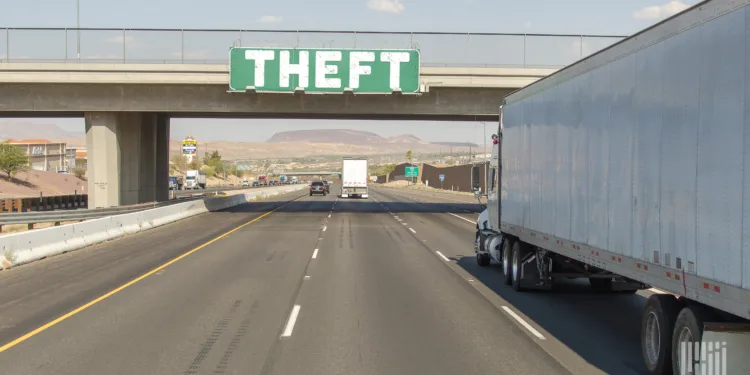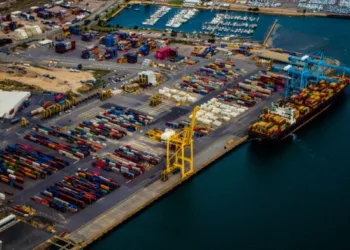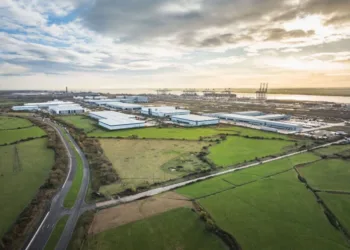Cargo theft across North America is rapidly evolving from traditional trailer break-ins to sophisticated digital fraud schemes that use artificial intelligence, social engineering and marketplace reselling to move stolen goods faster than ever before, experts told FreightWaves.
“Criminals have realized they can commit theft without ever touching the freight,” Danny Ramon, director of intelligence and response at supply chain risk firm Overhaul told FreightWaves. “They’re lowering their physical risk and scaling operations digitally — sometimes pulling off multiple thefts a day.”
Ramon said organized cargo networks are increasingly adopting AI-generated voices and synthetic identities to bypass verification calls or create fake carrier profiles.
“AI, just like it is in the business world, is a force multiplier in the criminal world as well,” Ramon said. “Unfortunately, it’s adding efficiency, it’s sometimes the appearance of legitimacy, especially to social engineering and phishing attacks. AI now is making these things messages … not only grammatically perfect, if need be, but maybe just imperfect enough to sound like a person.”
The digital shift mirrors a broader trend noted by Descartes’ account executive Danielle Spinelli, who is known in the freight industry as the “Fraud Girl” and hosts the Tell Me Everything podcast.
“I’ve heard of brokerages getting phone calls from AI bots on the carrier side — they’re trying not to sound Middle Eastern or raise red flags, just to sound like a typical call,” Spinelli said. “If you’re dispatching, ask drivers real-time questions — like about the weather or their surroundings — instead of routine ones, because that’s what the bots are programmed to answer.”
Cargo thefts in the U.S. increased 33% year-over-year in the second quarter to 525 incidents, according to Overhaul’s Q2-2025 cargo theft report.
Criminals targeted California (38% of all cases during the quarter), Texas (21%), Tennessee (15%), Pennsylvania (10%) and Illinois (7%). The areas around Los Angeles and Long Beach accounted for 36% of all cargo theft cases in the U.S. during the quarter.
Top commodities targeted by thieves in the quarter included electronics, food and beverage products and home appliances.
Low-risk, high-reward — and powered by social media
Both experts warned that freight crime has become more agile thanks to online reselling channels such as Facebook Marketplace, TikTok Shop, and small pop-up stores.
“There’s now a criminal direct-to-consumer pipeline by way of e-tail websites and social media marketplaces where whatever these cargo thieves are stealing, they’re reaping 100% of the sale price,” Ramon said.
On Oct. 2, authorities in Los Angeles arrested Adeel Shams, founder of popular sneaker resale platform CoolKicks, after discovering more than $500,000 in stolen Nike goods during a raid at the company’s Santa Monica warehouse. Following Shams arrest, CoolKicks issued a statement saying they had no knowledge that the Nike products were stolen goods when they purchased them.
Related: Sneaker reseller’s arrest highlights surge in US cargo thefts
Trending consumer products — from energy drinks to sneakers — are also top targets, Ramon added.
“Anything going viral on TikTok will get targeted,” Ramon said. “It’s no longer about cost density; it’s about how fast they can liquidate the load.”
Spinelli said even low-value loads like bottled water or Kraft mac and cheese have become training exercises for newer fraudsters.
“Some of the things happening is they’re making the new guys that are getting in the fraud game handle those low, lower risk ones because those are easier to train on,” she said. “I think then as they kind of get trained up, then they go after the big things.”
Holiday hotspots and a Mexico shift
Overhaul’s data shows theft spikes each holiday season near major intermodal hubs — including Southern California, Dallas-Fort Worth, Chicago, Atlanta, Memphis, and the Northeast corridor.
“Distribution centers are packed right now, and that’s when security corners get cut,” Ramon said.
Ramon noted rising theft and violence in Mexico’s freight corridors, especially in Puebla, which recently surpassed the State of Mexico as the top cargo-theft state.
“Cartel groups centralized control there, and now we’re seeing more violence at the start of thefts rather than just threats,” he said.
A growing cost to the industry
While cargo theft still represents only a small fraction of total freight transactions, Spinelli said its financial impact is severe.
“When companies get hit, insurance doesn’t always cover it — they pay out of pocket, and some shut down,” she said. “That cost just rolls back to the consumer.”
Both experts agreed that education and awareness — not just detection — will define the next phase of the industry’s fight against freight fraud.
“It’s a cat-and-mouse game,” Spinelli said. “The bad guys evolve fast. So the only real defense is staying one step ahead.”
The post AI deepfakes fueling digitally-enabled crime wave in the freight industry appeared first on FreightWaves.




















